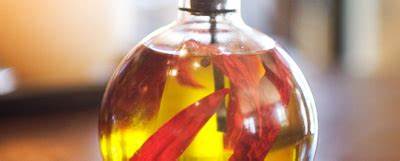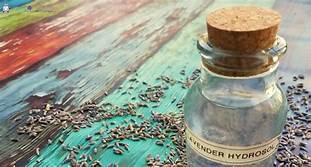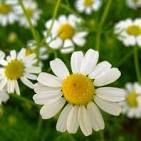Accessibility - Hydrosols







Accessibility - Hydrosols
In late 1999, nearly 50 percent of aromatheraphy stores, distributors, and practitioners surveyed sold and/or used some hydrosols. Every new aromatherapy book at least mentions hydrosols, and every year new waters come into the marketplace. Interest is exploding, and the uses for hydrosols are no longer primarily as an additive to cosmetic or beauty products.We are seeing the birth of a new paradigm in the world of aromatherapy.
The renewed interests in the waters is partly the result of an increase in the variety now available. There is also a greater interest in the broader therapeutic possibilities of this new aromatherapy. Aromatherapists are not just aestheticians or just body workers: they are holistic health practitioners. Educational standards in aromatherapy everywhere have been greatly improved, and professional, peer-reviewed organizations exist.
Conferences, seminars, and educational opportunities abound, and professional insurance is mandatory. We are considering ourselves professionals in the field of health maintenance and care and we would like the public to consider us professionals as well. The increase in professionalism also means that aromatherapists are seeking higher and higher standards in the quality of their products and use.
A health professional wants a professional product, and today that means essential oil produced soeciffically for therapeutic use. The public is also catchingon to this new standard, and the demand for quality products is starting to explode. As with any move forward, one finds that a level of information and education lies underneath. The quality issue was raised by the shift in the scope of practice and the surging popularity of aromatherapy.
The information demands, which both created and resulted from those shifts, mean that most new books and the majority of aromatherapy companies now highlight quality as their biggest selling point: quality of information, quality of sources, quality of products, quality of practice. Only the best is good enough. It is not a moment too soon. We can't treat health with polluted products.
Reference: Hydrosols- The Next Aromatherapy: Suzanne Catty
Food, Not Fluff - Hydrosols





Food, Not Fluff - Hydrosols
Greg Farrell, reporting in USA today in an article titled "Bottling Botanical Essences, " states that in 1998, "these products racked up sales oc $4 billion. " A three-year-old company, Soth Beach, " which infuses all of its SoBe beverages with these herbs project sales of $180 million this year [1999]." Snapple Beverages also launched a healthy-drink product line called Elements, "peppered with new age ingredients such as ginseng,"reports Farrell.
Martin salzman, chief trend watcher at advertising agency Young and Rubicam, says, " Herbal everything is now. I think we can look for herbal helpers in everything from breakfast cereal to tea bags, from enriched waters to smart yogurts." john Bello, the founder of SoBe, says, " There;s an emerging health consciousness. Its a cultural shift and it has spawned a huge and growing industry."
The mistake made with hydrosols has been to expect them to be sold in the same manner as essential oils or commercial-body-care products. Why not take the idea from the health juice companies: Create little custom fridges, beautifully decorated; splash freshness dates and instructions all ove the labels and advertising and promote the freshness, fragility, and purity of these fabulous substances. One practitioner I know doubled sales of hydrosols by putting a small glass-front fridge in her waiting room it works.!
And there's more to market with hydrosols. First, we're talking water here. Today aound 30 per cent of people carry bottles of water whereever they go. This is a new consciousness in plain view. Water is chic. Water in in. Water improves overall health, and people notice the difference.
And hydrosols are water! Even better, hydrolates taste best when diluted with water, and they have definite healing properties. It's water that works and tastes like a health drink. And hydrosols are no more expensive than those little four-ounce "green drinks." And isn't linden blossom or wild ginger as exotic as mango and lichee?
Reference: Hydrosols: The Next Aromatherapy: Suzanne Katty
A Question of Scale






A Question of Scale
The funny thing is that small-scale distribution and handling of hydrosols is easier than large scale. Unless you gear up to transport and store everything in refrigerated trucks, put coolers at the retail outlets, and packaging only under sterile conditions with adequate filtration, you are creating the ideal conditions for problems to arise.
Now, if hydrosols were treated like a foodstuff, or even beer (remember Bud?), then they would be handled in just this manner, but they are usually treated as cosmetics. The public treats very few cosmetics with this kind of elaborate care.
However, most aestheticians will tell you that you should never put your fingers in a jar of cream because you introduce bacteria that will happily grow in a nice rich base.
Do you use a little spatula to scoop your cream or face mask from the jar? Most people don't. So, for the mass market, a real change in thinking must occur if a hydrosol product is ever to become commercially viable.
Enter the grocery store. In the past three years a whole range of healthy beverages have been launched to capitalize on the juice-bar and health-food phenomenon. These drinks contain real fruit and a range of supplements like spirulina, wheat grass, ginseng, Saint John's wort, ginkgo, and so on. they contain no preservatives and have a short shelf life.
It is not uncommon to see them in the cooler right beside the soda pops and iced-tea drinks. These products are changing the way people think about their beverage choices. For many, especially the hip young health conscious and the upwardly mobile, it is these new drinks that fill the shopping cart.
And these consumers pay attention to the dates, and they do drink them quickly, which means they also buy more. These beverages cost more, but that is to be expected of a natural product. It is quite a shift in consumer buying habits, and it has happened in a relatively short time.
Reference: Hydrosols: The next Aromatherapy: Suzanne Catty
Hydrosols In The Marketplace








Hydrosols In The Marketplace
Throughout these pages are constant references to the subject of contamination and degradation of hydrosols, but for the most part, if you buy good products from a reputable supplier, care for the waters as directed, use them on a daily basis (it's the best way to see and feel the effects), and don't leave them where they will be damaged by high heat or bright lights, you will rarely have a problem with spoilage.
Unfortunately this is of no benefit to those who wish to mass-market hydrosols.
Articles - Most Read
- Home
- What are Hydrosols
- What are Hydrosols-2
- The Monographs
- How to Make a Hydrosol
- Table of Common Latin Names and pH Values - F - O
- Distilled or Extracted Specifically For Therapeutic Use - 3
- Kurt Schnaubelt
- What isn't a Hydrosol?
- Table of Common Latin Names and pH Values - P - S
- Wholly Water!
- Blue Babies
- Supply and Demands
- Mature Skin
- Recipes Alpha F
- Hydrosols In The Marketplace
- Chemicals: Friends or Foes?
- Hemorrhoids
- Nelly GrosJean
- Water as Medicine
- The Educated Consumer
- Genitically Modified Plants
- Influences
- Water Quality
Articles-latest
- Daucus carota/Wild Carrot Seed - pH 3.8-4.0
- Cupressus sempervirens/ Cypress-pH3.5-3.7
- Coriandrum sativum/Coriander Herb-and-Seed
- Comptonia peregrinal/Sweet Fern- pH 3.8
- Citrus clementine (fe) Clementine Petitgrain- pH 4.3-4.4
- Citrus aurantium var. amara (flos) /Neroli Orange Blossom-pH3.8-4.5
- Cistus ladaniferus/Rock Rose-pH 2.9-3.1
- Cinnamomum zeylanicum (ec) Cinnamon Bark-pH3.3
- Chamaemelum nobile/Roman Chamomile - pH 3.0-3,3
- Centaurea cyanus/Cornflower/Bachelor's Button-pH 4.7-5.0
- Cedrus atlantical/Cedarwood/Atlas Cedar-pH 4.1- 4.2
- Hydrosols -The PH - Anomalies
- Hydrosols- Establishing Shelf Life and Stability
- Boswellia carterii/FRANKINCENSE
- Asarum canadense/ Wild Ginger/Canadian Ginger
- Artemesia vulgaris / Artemesia
- ARTEMESIA DRACUNCULUS - TARRAGON
- Angelica archangelica / Angelica Root - Hydrosols
- The Key, or More Correctly, the pH - 2 - Hydrosols
- The Key, or More Correctly, the pH-Hydrosols
- The Hard pHacts - Hydrosols
- Calamus Root/Sweet Flag - ACORUS CALAMUS
- Yarrow - Achillea millefolium - Hydrosols
- Balsam Fir - Abies balsamea - Hydrosols

